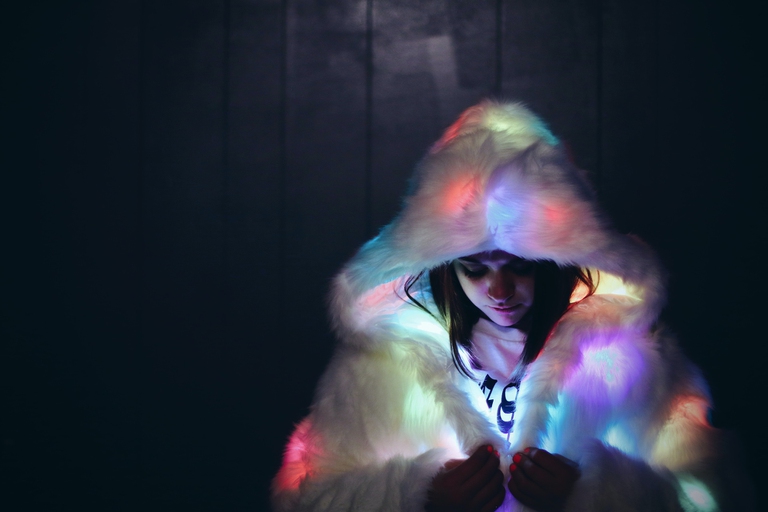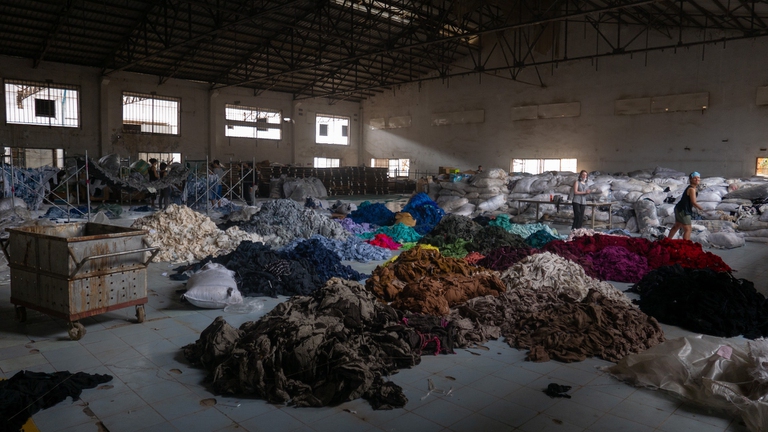https://www.lifegate.it/trend-moda-ambiente
- |
- In an increasingly accelerated world, intercepting new trends is increasingly important for brands.However, this continuous chase means that trends age quickly.
- Fashion always instills new desires and there is no second hand or recycled fiber that can hold up if the consumption of clothing is excessive.
- This has a direct consequence:the overproduction and enormous quantity of clothes bought and never worn and the production of 654 kilos of CO2 equivalent, per person, every year.
This is the time of the year when we begin to explore the trends that emerged six months ago on the spring-summer 2023 catwalks.On the one hand the magazines, digital or paper, on the other the brands, produce content after content regarding what will happen between now and the end of the summer.But who establishes these trend and, above all, how long they last and what consequences the fact that they are like this has birds?
All these questions are useful for collecting data to put into perspective to try to get a clearer picture of theimpact that the world of fashion has on our planet.Because all the bio-based materials and recycled materials from around the world and all the second hand items we can imagine it won't do much good if we consume it at a relentless pace.

The point is also this:fashion, making trends age quickly, instills always new desires and therefore fuels the consumption of clothing with all that comes with it overproduction.
Fashion trends:where do they come from?
At the end forecasting perhaps you are used to associating weather forecasts:well, a service like this, just like the weather, also exists when it comes to fashion.It's a slightly more complex process than simply consulting an app, but it's based on the same principle: data and information are collected to be able to formulate projections about something that will happen at a given time and in a future time.
Forecasting agencies do this:first they gather information through those who are called cool hunters (a professional figure whose contours began to emerge more clearly towards the beginning of the nineties) than they frequent the most disparate places on the globe, discover new digital protagonists, identify changes in people's behavior models and tastes.They frequent the most varied social groups, but they also do a lot of scouting in terms of materials, shapes and colours.They scan the meeting points of subcultures, explore all those places where there is excitement and where the trends of the future in terms of clothing could take shape.Once the various cool hunters have reported and shared their observations, they are analyzed by teams that generally involve them both sector experts and psychologists and sociologists.
Being on top of things for brands is so important that these figures are increasingly in demand, so much so that they are also multiplying ad hoc study paths in the various fashion faculties and schools.The speed with which brands are able to predict the arrival of a new trend can give them a sort of leadership position in that specific area - let's say it's sneakers for example - but at the same time this continuous run-up ensures that on the screens of our phones, on billboards and on the pages of magazines there are always new things to want.
Our brain is programmed to be attracted to new things and the more products we are offered, the more likely it is that our system will identify them as desirable.Because if it is true that for the most significant trends we are talking about certainly not short durations - they can influence our imagination for as many as five years - new drop, a few clothes or accessories from an often limited collection arrive in stores continuously, stimulating our propensity to purchase.

The aging process of clothes
Think about it carefully, how many items do you have? worn until exhaustion and you decided to dispose of them when they were no longer presentable?Probably not many.This happens because the deterioration of our clothes depends much more on the issues we are dealing with aesthetics than with their actual durability.
We often prefer to wear something no longer perfect in terms of workmanship rather than a clearly outdated garment;in fact the 32 percent of Italians buy clothes regularly once or twice a month, according to what emerged from a survey by Pulsee, Axpo Italia's digital and green electricity and gas brand, in collaboration with the market research company NielsenIq.Not only that, the 43 percent of the sample – specifically, 34.8 percent of men and 52.5 percent of women – say they have several times bought clothes or accessories that he never wore.
On average a European citizen buys 26 kilos of textile products every year, to make it known is a report published by European Parliament. If we make a comparison with consumption habits in the nineties, it emerges that each person makes purchases for 40 percent more.This translates, in the European Union alone, into a production of 654 kilos of CO2 equivalent, per person, every year.
This partly also happens because ultimately we buy things we probably don't like that much, but they are considered cool in a certain historical moment and therefore they seem to us to be essential purchases.However, if it happens that we don't wear them at first, once the hype around that particular item or that particular trend has worn off, we no longer have a valid reason to wear it and therefore it remains in the wardrobe.
The durability of the garments has drastically shortened, it has dropped by 36 percent in recent decades and many of the clothes we buy today have a waistline shorter than 160 uses.This ultimately results in a tide of textile waste. From 1960 to 2015 those produced in Italy they increased by 811 percent according to Eurispes Italy 2020 report.In 2015 alone, the last year examined, 1,630 tons of clothing ended up in landfill.

Tik tok and the creators who teach how to adapt clothes according to the latest trends
So what to do?The quickest solution is to ignore the trends and build your own own style regardless of what the fashions of the moment are and invest in those items that are generally called timeless, that is, timeless, and which as such cannot be pigeonholed with a clear temporal connotation.You can then build your own capsule wardrobe by investing in a few high quality pieces that can be easily combined in order to create always different looks, or you can modify the clothes you already have by readjusting them in an upcycling activity according to the style of the moment.
https://vm.tiktok.com/ZMY4M6LS4/
Searching on TikTok for “Upcycling”, “Reworking old clothes”, “Upgrading my old clothes” you will find a lot of profiles of creators who they repurpose anything:from grandma's checkered shirt, to jeans and t-shirts for playing sports.Profiles like Issy (above) create videos with 5 million views at once and, in addition to being hypnotic, they give some valid and often feasible suggestions for rehash something we no longer wear.
